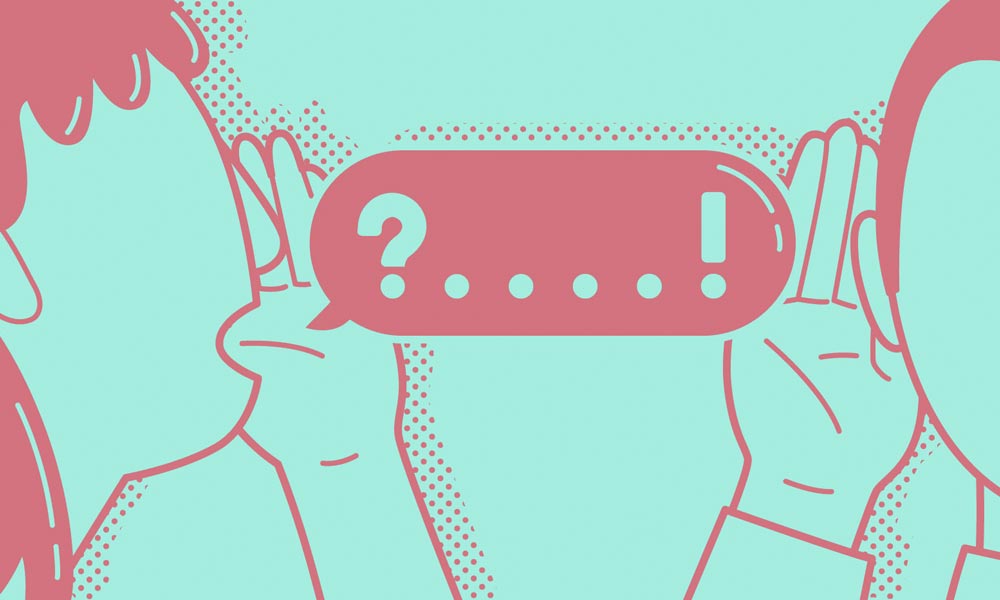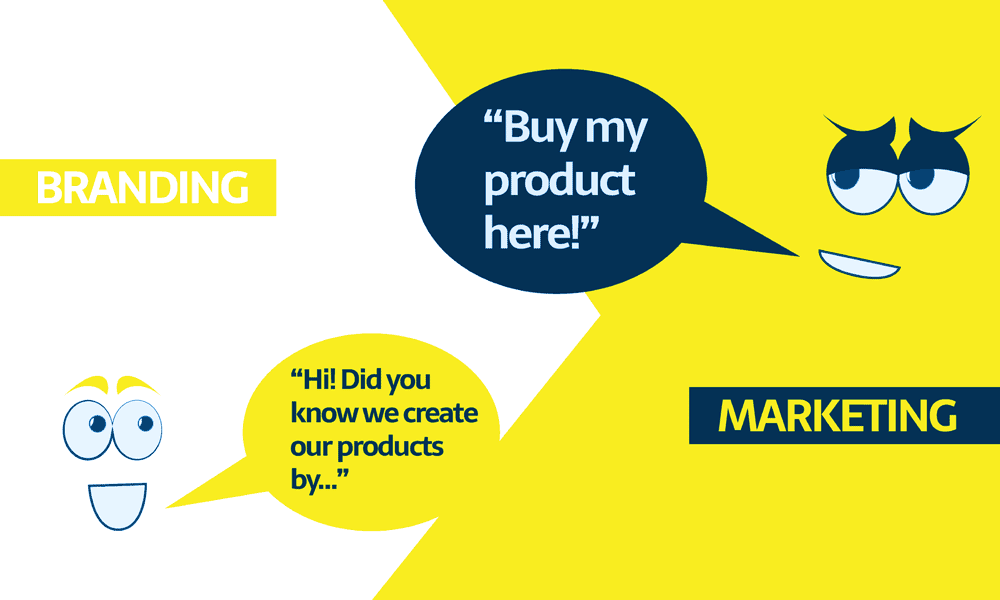
03 Feb 7 Tips to Establish a Better Designer-Client Relationship
7 Tips to Establish a Better Designer-Client Relationship
The field of graphic design is one of the hottest industries at the moment.
With more startups than ever before, as well as organisations and individuals who are migrating online, captivating visual content has become the holy grail of success in the digital world.
However, designers are often underappreciated, underestimated and even outright disrespected by their clients.
There are so many of those who offer endorsement instead of payment, as well as those who believe this craft to be merely a hobby.
To avoid all of these nightmare scenarios, here are several tips and tricks to help you establish a better designer-client relationship.
1 – Don’t assume, ask

The first piece of advice that you need to take is the fact that you shouldn’t assume what your clients want in a designer-client relationship – you need to ask them.
The art of active listening is quite had to master (even though it comes more naturally to some), but it’s vital for the designer-client relationship in any industry.
Just remember that your clients aren’t professional designers, which means that their views of what’s possible or available are quite limited.
Therefore, try suggesting a different approach to some ideas but never, ever insist on it.
Remember, you’re not their partner, you’re a paid professional who’s hired to perform the service they need.
Another thing worth mentioning is the fact that you shouldn’t just ask them for their opinion when it comes to significant design elements.
Ask them about specifics, as well. The more questions you ask, the better.
Moreover, some clients may have trouble expressing themselves, which is why you might need to assume a different approach and try extracting information from them.
There are times when trying to deduce what they want won’t be easy.
2 – Don’t accept more work than you can handle

One of the biggest mistakes in a designer-client relationship is refusing to say no in fear of leaving a bad impression.
Some people know how hard it was to find work initially, which will make them reluctant to refuse any job that comes their way.
However, agreeing to do a project that you don’t have the time or resources to handle is the worst possible thing for an aspiring designer.
It would be best if you also kept in mind the fact that designing is a creative process.
The amount of work that you can get done in a day won’t always be the same.
You need to give yourself more room and ask for a more lenient deadline than you realistically need.
Keep in mind not to push it too far in order not to get lazy since, according to Parkinson’s law of productivity, work expands to fill the time allotted for its completion.
Now, there are many downsides to accepting more work than you can handle and here are some of them.
First of all, you risk failing to complete the task altogether, which is a breach of contract and may result in a fine.
Not to mention a ton of bad reviews and brand mentions that this will earn you, as well.
Second, you risk completing the task with an unsatisfactory quality.
Which again reflects poorly on your reputation.
The blow to your self-esteem and confidence is imminent, as well.
3 – Efficiently gather customer feedback

There are many reasons why you need customer feedback in a designer-client relationship, both positive and negative.
First of all, this will help you improve and grow as a professional.
Second, by streamlining this feedback gathering, you can even get some social proof like testimonials.
This is why it’s handy to use a specialised customer feedback app.
Remember, not everyone who is satisfied with your work will give you feedback.
With this tool, you can rectify this inconvenience.
When present in a significant enough number, these positive reviews can help overcome those couple negative ones, thus drastically improving your reputation.
4 – Focusing on your marketing

One other relevant issue that you have to keep in mind is the fact that the opinions that your audience has of you probably start before they even contact you.
For instance, they might have heard of you from someone you already did business with or have checked out your website.
Provided that you have your own website, displaying these testimonials, as well as brands that you’ve previously worked with, will come in quite handy.
The same goes with mentioning brands that you’ve previously worked for.
Your potential clients are most interested in your previous work.
Make sure to list or display them on your website. Another great idea is for you to start a blog.
This way, your audience will have a way of sampling some of your expertise before reaching out to you.
The reason why this is so important for a designer-client relationship is because you can use this to gain their respect before you even start negotiating.
5 – Learn how to say ‘no’ politely

Previously, we’ve mentioned the fact that you’ll, from time to time, be forced to refuse work.
How you do so matters quite a bit and here are some tips to help you learn how to do this.
First of all, you need to listen to their offer genuinely.
Refusing until you’ve heard them out is considered impolite and even outright disrespectful.
Next, you need to focus on what you can do and explain why what they’re offering exceeds this.
It’s incredibly important that you don’t burn any bridges, so make sure to thank them for contacting you first.
So, be transparent about the amount of time that you would need to complete their project and tell them if this doesn’t coincide with your schedule.
You don’t have to reveal who your other client is or which projects are you currently working on.
Express the regret that you can’t accept this offer and try to help them figure out the solution to this problem.
Keep in mind that you may have some friends within the same industry, so why not redirect this offer to them.
Think about it, you won’t be able to do the task either way, so why not help out someone who needs work.
Who knows, at one point they may return the favour.
Lastly, it would help if you remembered that refusing work doesn’t make you look unprofessional.
If anything, it shows that you are in demand.
6 – Always have something to show

Sure, waiting until the very last moment to show your work to a client will add that satisfying shock value to the entire event. However, it’s a tricky business.
What if they don’t like what they see?
In this case, they may refuse to pay or leave you a negative review.
Sometimes it’s hard to tell which of the two is the worse.
In the best-case scenario and if they’re not on a tight schedule, they’ll agree to let you try again.
This last scenario is a massive waste of time and resources, as well as something that causes a lot of stress and dissatisfaction.
It may even make you question your decision to become a designer, to begin with.
To avoid it, what you need to do is have a tool that will allow you to make quick preliminary sketches that you can show to your clients.
Remember, there are usually laymen, which is why they probably can’t visualise the exact design that they’ve asked you to make.
By helping it come to life, you’ll give them a chance to express their satisfaction/dissatisfaction before it is too late.
This makes pivot a lot cheaper, more straightforward and less stressful, to begin with.
7 – Learn how to handle criticism

The last skill that you have to master to make it in a designer-client relationship is to learn how to handle criticism.
First of all, try to understand that design is an art form.
As such, it only has subjective value and not an objective quality.
This means that there is someone out there who genuinely dislikes some of the purest, most beautiful art pieces like Michelangelo’s David, Rembrandt’s, Self-Portrait with Two Circles or Picasso’s Guernica.
With that in mind, would it surprise you that there’s someone out there who dislikes the design that you believe is brilliant?
Those who take this too personally and get too upset over this will have too hard of a time dealing with this industry on a daily basis.
In the end, try to look at this from a business perspective.
Your client is not paying for art; they’re paying for a product and, because it’s something they’ve paid for, they want something with the features that appeal to them.
Instead of focusing on the product itself, focus on client satisfaction.
This will help you develop a healthier approach to criticism, as well.
While some of the above-listed tips are closely related to the design industry, the truth is that most of them (if not all), also apply in any professional/client relationship.
After all, making an excellent first impression, establishing a solid reputation and learning how to say no are pivotal skills in any field.
Keep in mind that success in the business world is determined by your people skills as much as it is by your competence to do your job.
Therefore, adhering to the above-listed tips is more than recommended and advised in any designer-client relationship.
The post 7 Tips to Establish a Better Designer-Client Relationship is by Stuart and appeared first on Inkbot Design.


